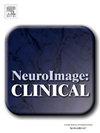针对特定扫描仪优化多发性硬化症的自动病灶分割。
IF 3.6
2区 医学
Q2 NEUROIMAGING
引用次数: 0
摘要
背景与目的:多发性硬化症患者(pwMS)磁共振成像扫描的自动病灶分割技术可为试验和临床实践中的病灶检测和分割提供支持。然而,由于对不同扫描仪的可靠性了解有限,妨碍了临床应用。本研究的目的是调查病灶分割工具在三种不同扫描仪上对多发性硬化症患者的扫描内重复性和扫描间重复性,并将其准确性与经过或未经过优化的手动分割进行比较。GE Discovery MR750(3.0 T)、Siemens Sola(1.5 T)和 Siemens Vida(3.0 T)。每台扫描仪都采集了三维液相衰减反转恢复(3D-FLAIR)和三维 T1 加权扫描。病灶分割包括预处理、使用病灶分割工具箱(LST)和nicMSlesions(nicMS)进行自动分割以及手动分割。两种自动分割技术都使用了默认设置,并对设置进行了优化,以匹配每台扫描仪的手动分割,以及三台扫描仪的组合。LST 设置的优化方法是调整阈值,分别提高每台扫描仪的 Dice 相似性系数(DSC)和所有扫描仪的综合阈值。对于 nicMS,对最后一层进行了重新训练,一次是使用多扫描仪数据进行综合优化,另一次是针对每台扫描仪分别进行扫描仪特定优化。提取体积和计数。计算 DSC 的准确性,并使用类内相关系数 (ICC) 评估可靠性。不同软件之间的 DSC 差异采用重复测量方差分析进行检验,适当时采用 Bonferroni 校正进行事后配对 t 检验:结果:与默认设置和组合设置相比,除通用电气扫描仪外,扫描仪特定优化显著提高了 LST 的 DSC。与默认设置相比,NicMS 在扫描仪特定优化和组合优化下的 DSC 都明显更高。体积和计数的扫描仪内重复性非常好(ICC>0.9)。Vida 和 Sola 之间的容积扫描仪间 ICC(0.94-0.99)高于 GE MR750 和 Vida 或 Sola 之间的 ICC(0.18-0.93),nicMS 扫描仪特定 ICC(0.87-0.93)高于其他 ICC(0.18-0.79)。结论:结论:针对特定扫描仪的优化策略证明能有效减轻扫描仪之间的变异性,解决默认设置下可重复性和准确性不足的问题。本文章由计算机程序翻译,如有差异,请以英文原文为准。
Scanner-specific optimisation of automated lesion segmentation in MS
Background & Objective
Automatic lesion segmentation techniques on MRI scans of people with multiple sclerosis (pwMS) could support lesion detection and segmentation in trials and clinical practice. However, knowledge on their reliability across scanners is limited, hampering clinical implementation. The aim of this study was to investigate the within-scanner repeatability and between-scanner reproducibility of lesion segmentation tools in pwMS across three different scanners and examine their accuracy compared to manual segmentations with and without optimization.
Methods
30 pwMS underwent a scan and rescan on three MRI scanners. GE Discovery MR750 (3.0 T), Siemens Sola (1.5 T) and Siemens Vida (3.0 T)). 3D-FLuid Attenuated Inversion Recovery (3D-FLAIR) and 3D T1-weighted scans were acquired on each scanner. Lesion segmentation involved preprocessing and automatic segmentation using the Lesion Segmentation Toolbox (LST) and nicMSlesions (nicMS) as well as manual segmentation. Both automated segmentation techniques were used with default settings, and with settings optimized to match manual segmentations for each scanner specifically and combined for the three scanners. LST settings were optimized by adjusting the threshold to improve the Dice similarity coefficient (DSC) for each scanner separately and a combined threshold for all scanners. For nicMS the last layers were retrained, once with the multi-scanner data to represent a combined optimization and once separately for each scanner for scanner specific optimization. Volumes and counts were extracted. DSC was calculated for accuracy, and reliability was assessed using intra-class correlation coefficients (ICC). Differences in DSC between software was tested with a repeated measures ANOVA and when appropriate post-hoc paired t-tests using Bonferroni correction.
Results
Scanner-specific optimization significantly improved DSC for LST compared to default and combined settings, except for the GE scanner. NicMS showed significantly higher DSC for both the scanner-specific and combined optimization than default. Within-scanner repeatability was excellent (ICC>0.9) for volume and counts. Between-scanner ICC for volume between Vida and Sola was higher (0.94–0.99) than between GE MR750 and Vida or Sola (0.18–0.93), with improved ICCs for nicMS scanner-specific (0.87–0.93) compared to others (0.18–0.79). This was not present for Sola vs. Vida where all ICCs were excellent (>0.94).
Conclusion
Scanner-specific optimization strategies proved effective in mitigating inter-scanner variability, addressing the issue of insufficient reproducibility and accuracy found with default settings.
求助全文
通过发布文献求助,成功后即可免费获取论文全文。
去求助
来源期刊

Neuroimage-Clinical
NEUROIMAGING-
CiteScore
7.50
自引率
4.80%
发文量
368
审稿时长
52 days
期刊介绍:
NeuroImage: Clinical, a journal of diseases, disorders and syndromes involving the Nervous System, provides a vehicle for communicating important advances in the study of abnormal structure-function relationships of the human nervous system based on imaging.
The focus of NeuroImage: Clinical is on defining changes to the brain associated with primary neurologic and psychiatric diseases and disorders of the nervous system as well as behavioral syndromes and developmental conditions. The main criterion for judging papers is the extent of scientific advancement in the understanding of the pathophysiologic mechanisms of diseases and disorders, in identification of functional models that link clinical signs and symptoms with brain function and in the creation of image based tools applicable to a broad range of clinical needs including diagnosis, monitoring and tracking of illness, predicting therapeutic response and development of new treatments. Papers dealing with structure and function in animal models will also be considered if they reveal mechanisms that can be readily translated to human conditions.
 求助内容:
求助内容: 应助结果提醒方式:
应助结果提醒方式:


